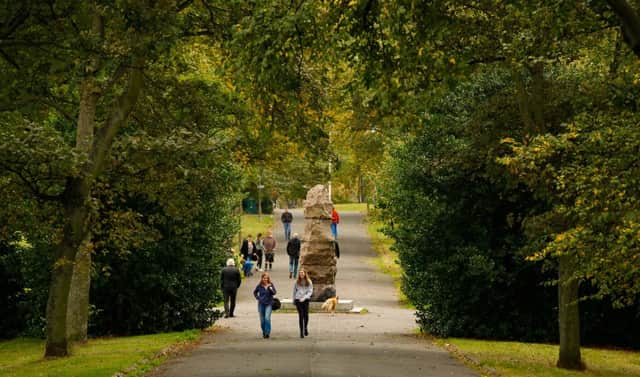Scots using public parks and gardens less as council cuts hit


The study, the third State of Scotland’s Greenspace, shows there is a total of 1,593 square kilometres of greenspace in built-up areas.
This equates to an area 22 times the size of Loch Lomond.
Discounting private gardens, this amounts to the equivalent of a tennis court of green space for every city-dweller.
Advertisement
Hide AdAdvertisement
Hide AdHowever, surveys show there is a continuing fall in use by local residents, with a deterioration in the quality of council-owned outdoor areas blamed for the trend.
Previous research had showed a steady rise in frequency of visits to local greenspaces between 2004 and 2007, but this has been declining in the past few years.
Nearly two thirds of urban Scots took advantage of neighbourhood facilities at least once a week in 2009, while fewer than half did the same in 2017.
The latest report shows there has been a significant decrease in those saying that greenspace meets their needs, from 82 per cent in 2011 to 76 per cent last year.
There has been an even more dramatic reduction in those who are very satisfied with the quality of local green areas, from 40 per cent to 23 per cent.
It also found that four in ten people feel the quality of public parks and gardens has got worse in the last five years. The figure rises to one in two in the most deprived areas.
Results also show green areas continue to fall short of people’s expectations for them to be good places for children to play, safe spaces for physical activity and somewhere to relax and unwind.
It’s thought a lack of funding is the major cause.
Statistics show average net council spending on parks and open spaces per 1,000 of the population has reduced in real terms by 21.6 per cent between 2010 and 2016, from £27,814 to £21,794.
Advertisement
Hide AdAdvertisement
Hide AdThere has been a year-on-year reduction over the period, with cuts accelerating in the last 12 months.
The report authors say urgent action is needed to prevent a “downward spiral” in the standard of urban green space, which has been shown to offer significant health and well-being benefits to society.
Julie Procter, chief executive of Greenspace Scotland, says the study raises important questions.
“It shows that Scotland’s greenspace is not delivering to its maximum potential for our people and our places,” she said.
“Whilst many of our parks and greenspaces are still in good heart, the report shows we are rapidly approaching a tipping point leading to the downward spiral of reduced maintenance, poorer quality greenspaces and lower levels of use – meaning we are at risk of losing the wonderful health, social and environmental benefits that quality greenspaces provide.”
She and her colleagues are calling for leaders to consider the findings and reassess how urban greenspaces can best be used to benefit Scots.
“Studies repeatedly show the positive impact that greenspace can have on our quality of life and particularly on health and well-being” added David Jamieson, chair of Greenspace Scotland.
“Greenspace is a classic example of ‘preventative spend’, where spending money now saves money later.”
Analysis by City of Edinburgh Council shows the financial and social benefits of greenspace outweigh the costs of looking after them by a ratio of at least 12:1.